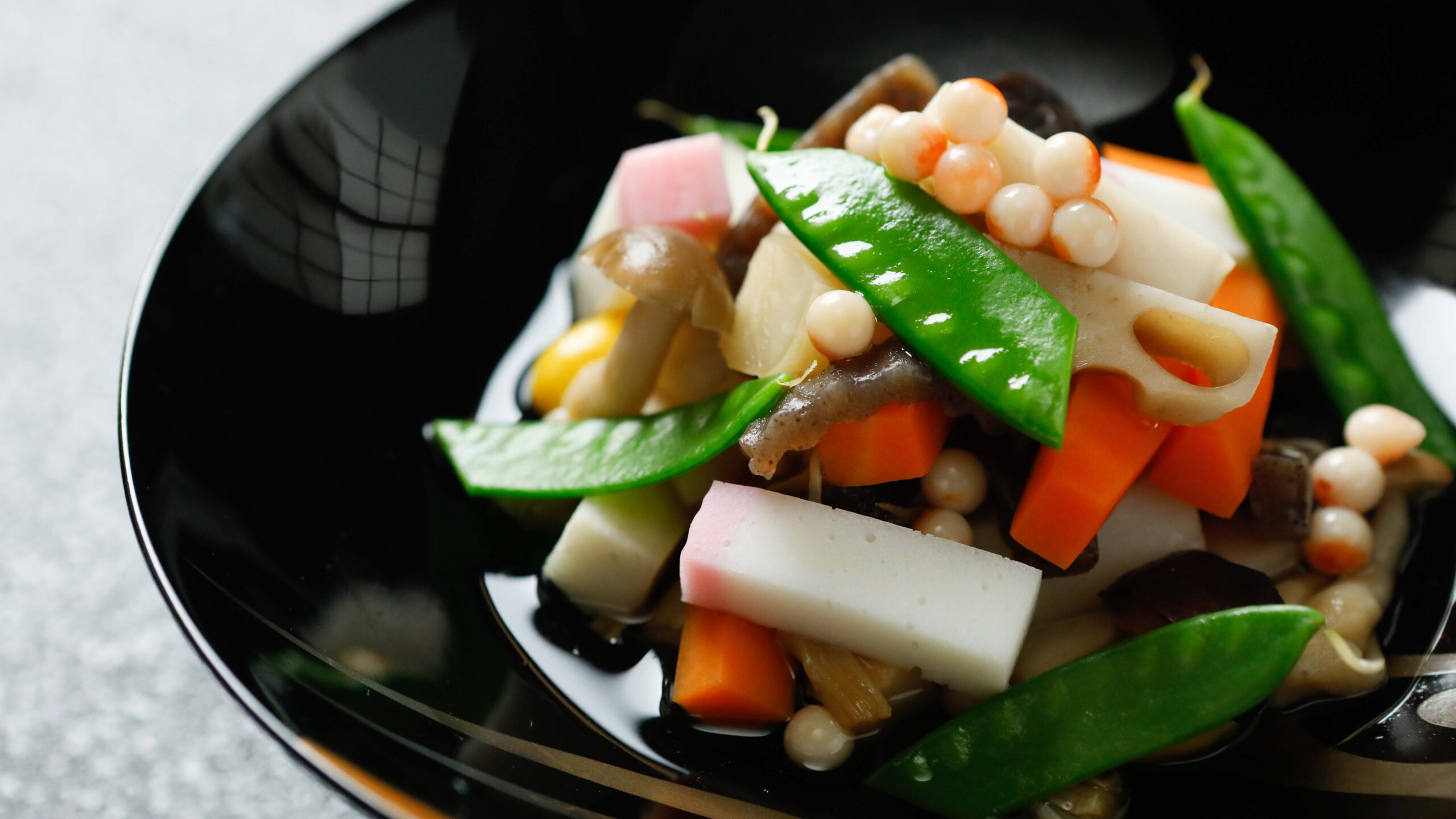
Hailing from the snowy lands of Niigata Prefecture, “Noppe” is more than just a stew; it’s a comforting taste of home. Unlike the thinner “noppei-jiru” found elsewhere in Japan, Niigata’s Noppe is a simmered dish, thickened with the natural starch of its star ingredient, the humble taro root. Packed with various vegetables, mushrooms, and often seafood or chicken, it’s a dish that tells a story of resourcefulness and tradition.
Dish Name: Noppe
- Region / Location: Niigata Prefecture, Japan
- Primary Area of Tradition: Throughout Niigata Prefecture
- Main Ingredients: Scallop adductor muscle, dried shiitake mushrooms, bamboo shoots, taro, carrot, konnyaku (yam cake), kamaboko (fish cake), ginkgo nuts, salted salmon
How It’s Eaten / Served
It’s important to keep the broth clear when making Noppe, so the ingredients aren’t simmered for too long. For auspicious occasions, the number of ingredients might be an odd number, and vegetables might be cut into round or thick rectangular shapes. For Buddhist memorial services, they might be cut into irregular, thin rectangular, or triangular shapes. Noppe is enjoyable both warm in the winter and chilled in the summer.
Cultural Background and Preservation
Born out of necessity in a region with heavy snowfall, Noppe was often made in large quantities and kept cold in the snow, acting as a natural refrigerator. While traditionally made with scallop broth, modern variations sometimes include chicken or diced salted salmon. The method of thickening varies from using the natural stickiness of taro to adding katakuriko (potato starch). Regional names for similar dishes include “Konimo,” “Ooumi,” “Kokushou,” and “Itoko-ni,” each with its own slight twist. This home-style dish has been passed down through generations, embodying the comforting flavor of a Niigata mother’s cooking. It’s a staple for New Year’s celebrations but enjoyed year-round, and it’s a must-have at festivals, funerals, and weddings in Niigata. Even if families order other New Year’s dishes, they often make Noppe at home. Today, while adapting with new ingredients and techniques, Noppe continues to be a cherished home-cooked meal. It’s also featured in school lunches in Niigata Prefecture, offered in izakaya (Japanese pubs), and sold as a prepared food in supermarkets and even as an ekiben (train station bento box).
Additional information:
- Konnyaku: A jelly-like food made from the starch of the konjac plant. It has a chewy texture and is often used in stews and other Japanese dishes.
- Kamaboko: A type of cured surimi (fish paste) that is often formed into loaves and steamed. It has a mild, slightly sweet flavor and a firm texture.
- Ginkgo nuts: The edible seeds of the ginkgo tree. They have a slightly bitter taste and a chewy texture, and are often used in savory Japanese dishes.
- Sayaindō: Snow peas or sugar snap peas. These are young pea pods that are eaten whole.
- Totomame: Salmon roe (eggs). These are small, orange-red eggs with a slightly salty and fishy flavor.
- Katakuriko: Potato starch. It is commonly used in Japanese cooking to thicken sauces and stews.
- Ekiben: A bento box specifically sold at train stations in Japan. They often feature local specialties.
The information about regional cuisine featured on this website (Piggy's Grandma of Japan) is summarized and adapted from the Ministry of Agriculture, Forestry and Fisheries of Japan (MAFF) website, "Our Regional Cuisines"Additional commentary is provided based on the unique experiences and perspectives of the site's editors.
The copyright for the original content regarding regional cuisine belongs to the Ministry of Agriculture, Forestry and Fisheries of Japan.
The summaries and adaptations published on this site are intended for informational purposes only. Piggy's Grandma of Japan does not guarantee the accuracy or completeness of this information. For the most accurate and complete details, please refer to the original pages on the MAFF website.

